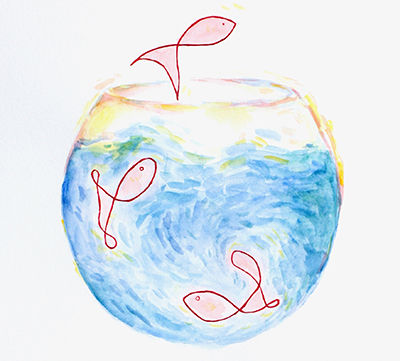
Chapter V: Fishes with round and spiky tails (immersed and non-immersed loops). (Image courtesy of Talia Blum. Used with permission.)
I sometimes get puzzled questions about the content of this chapter. The rotation number seems fine, and Whitney’s formula allows us to relate it to the shape of the immersed curve, fulfilling an obvious need. But Arnold invariants are hard to learn about from either Google or GPT, so they must be pretty pointless? Setting aside the question of one’s faith in the internet, the landscape of immersed curves is quite complicated, and Arnold invariants give one a kind of rough coordinate system. They are also a first introduction to a method which is widespread in knot theory, namely the construction of invariants that are primarily characterized by how they change under various geometric transitions. And finally, they are fun and a little tricky to work with, which is what we care about most!
Besides V. Arnold, Topological invariants of plane curves and caustics, Amer. Math. Soc., 1991, I have used O. Viro, Generic immersions of circle to surfaces and complex topology of real algebraic curves. In Topology of real algebraic varieties and related topics, Amer. Math. Soc., 1996, p. 231-252, and A. Shumakovich, Explicit formulas for strangeness of plane curves, St. Petersburg Math. J. 7 (1996), p. 445-472.










